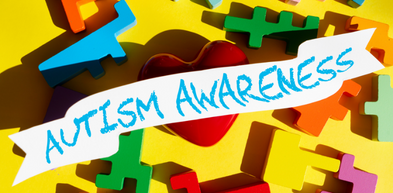
AET in Initial Teacher Training
St Mary’s University in London has been trialling our programme as part of their Initial Teacher Training course. Their feedback is very positive, so much so that they integrated parts of the AET programme in their curriculum. We talked to Professor Anna Lise Gordon, Interim Director, Institute of Education at the university about her experiences.
Professor Anna Lise Gordon is brimming with energy and enthusiasm, you can’t help wanting to sign up for one of her lectures at St Mary’s University, just to be able to soak up her infectious vitality. It’s particularly nice to hear her talking about our programme with all this enthusiasm, of course. We asked her to tell us about her experiences with the AET programme that she has been trialling for more than a year.
What teacher training courses does your university offer?
“Initial Teacher Training (ITT) is a very important part of our provision at St Mary’s University. There are currently approx. 850 students studying to become teachers either via undergraduate studies in three years or as a post-graduate student in one year. We offer primary and secondary teacher training courses, as well as CPD events for NQTs and more experienced teachers.”
Why did you decide to include autism education training into your curriculum?
“At St Mary’s, we have a special focus on SEND. We want to ensure that all our ITT students receive training that enables them to support children with special needs in their class. Some of the students will spend a short placement at a special school as part of their training. We have a strong focus on inclusion; in fact, it is part of our vision to ensure that all trainee teachers are prepared to support and include children of all abilities in their classroom.”
Why did you choose the Autism Education Trust programme?
“I heard about AET through a colleague and once I learned more about the programme I realised just how much more there is to know – and teach – about autism. It did not take long to convince my colleagues about the benefits of the programme; in fact, 12 colleagues agreed to be part of the initiative straight away. We realised that the AET programme can enable our students and future teachers to look more effectively at their SEND provision through the lens of autism.”
Which AET module do you use?
“Our programme is based on the AET Schools good autism practice module.”
Did you find it easy to adapt the AET programme to fit into your curriculum? Did you have to adapt it at all or can you use it without modification?
“Autism was part of our curriculum even before we adopted the AET programme but it was not as specific as it is now. At the moment we offer the AET training as an optional one-day course or a series of twilight sessions. We have a one-day course for primary finalist trainees, one for secondary finalist trainees and NQTs, and one for a mixed primary and secondary trainee audience. Even though it requires extra commitment from the students, it’s very popular and is constantly oversubscribed. 50 of our AET trainees started to work as NQTs this September. We also use some parts of the training, mostly the videos, in our core ITT curriculum as well and are planning to integrate more of it in the future.
What we find particularly exciting about the training is that we can provide this course to a mixed primary-secondary student audience. These students don’t usually meet in class but the AET course gives them an opportunity to share and discuss their opinions and look at the challenges that children with autism face throughout their school life and at key transition points from different angles.”
What are your experiences with the programme? What do you think of the programme?
“Given the rising number of children with an autism diagnosis, we think it’s really important to prepare all our trainee teachers for working with these children. The AET programme is perfect for this. We greatly appreciate the wealth of resources that are included in the modules, especially the great videos and case studies. We are dividing the course into mini-modules, such as The Individual Child and Building Relationships, Curriculum and Learning, and Enabling Environments.”
Do you have any feedback about the training programme from students?
“We have an overwhelmingly positive response from our students. The AET programme offers a real insight into the everyday challenges of children with autism and helps prepare a support strategy. We conduct an evaluation at the end of each course and can see a greatly increased understanding in several areas: awareness of the heightened anxiety autistic children experience; the importance of getting to know the individual needs, strengths and challenges of each child; the understanding of the four key areas of difference and the importance of information sharing with the team around the child. The students also get to explore ways to develop pupil and parent voice, develop an understanding of peer awareness and explore ways to adjust and differentiate whilst delivering the curriculum.”
What is the one thing that you particularly like about AET’s programme?
“The videos. They are very high quality and support the course content in a very powerful way.”
Would you recommend the AET programme to other universities?
“Definitely. Every trainee teacher should receive this training.”


